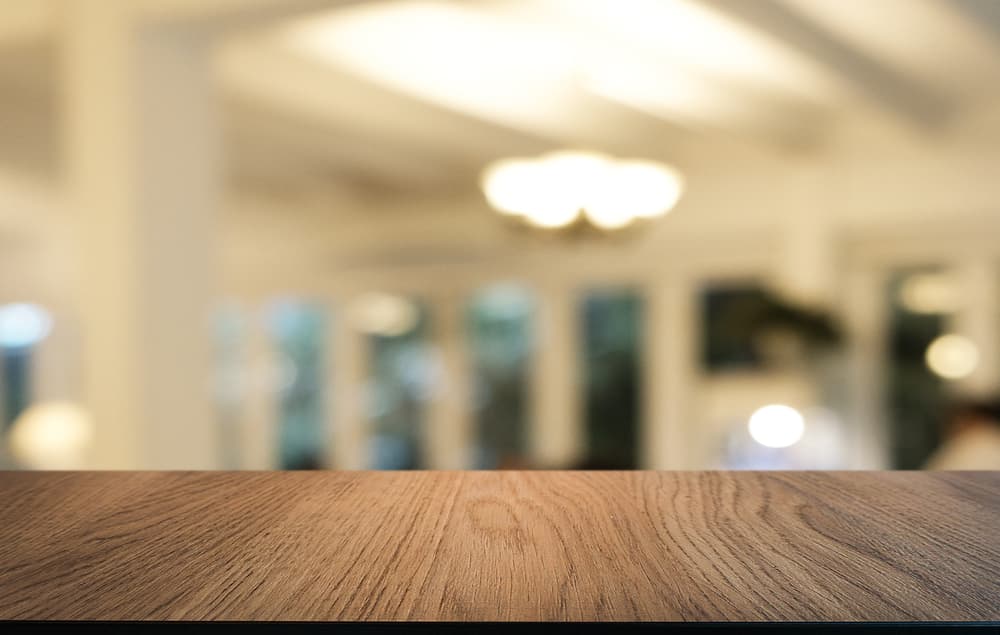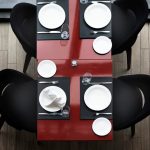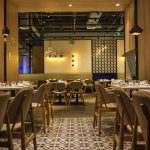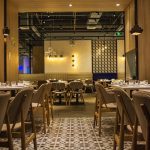Choosing the right tabletop material is crucial when selecting furniture for your home, office, or commercial space. The right material not only enhances aesthetics but also impacts durability, maintenance, and overall functionality. If you’re wondering how to choose the right tabletop material, this guide will help you explore the best options based on your needs, budget, and style preferences. Whether you’re considering wood, glass, marble, or laminate, we’ll break down the pros and cons of each to help you make an informed decision.
Table of Contents
Toggle- Factors to Consider When Choosing a Tabletop Material
- Solid Wood Tabletops: Timeless Elegance and Durability
- Glass Tabletops: Modern and Sleek
- Marble Tabletops: Luxurious and Sophisticated
- Quartz Tabletops: A Low-Maintenance Alternative
- Laminate Tabletops: Affordable and Versatile
- Metal Tabletops: Industrial and Durable
- Concrete Tabletops: Industrial Chic and Resilient
- Best Tabletop Material for Different Uses
- Restaurant Furniture Layout
- 4 Tips for Furnishing your Restaurant
- How to Furnish a Restaurant
- How to choose furniture for your restaurant
- What is the role of color in restaurant interior design?
- Most popular wood types for restaurant furniture
- Psychology of Restaurant Designs
- How to Choose Timeless Furniture for your Hotel
- Turkish Restaurant Furniture Options
- Restaurant Furniture Istanbul
- Restaurant Bar Chair Ideas from Turkey
- Metal or Plastic Chair for your Restaurant in Turkey
- Restaurant Chair Produced in Turkey for Indoor and Outdoor
- Selecting Restaurant Tables Made in Turkey
- Designing Restaurant Booth Seating From Turkey
- 7 Things to Consider Whilst Designing a Restaurant Furniture Layout
- The Guide to Planning and Buying Restaurant Tables and Chairs Made in Turkey
- Advantage of Booth Seating Made in Turkey
- What type of restaurant chair should you prefer – wooden, metal, or plastic?
- Building A Unique Atmosphere
Factors to Consider When Choosing a Tabletop Material
To select the right tabletop material, you must assess a few essential aspects:
- Durability: Consider the frequency of use and exposure to moisture, heat, and scratches.
- Maintenance: Some materials require regular sealing, while others are easy to clean.
- Aesthetic Appeal: The material should complement your interior design and personal style.
- Budget: The cost varies significantly, so align your choice with your budget.
- Weight and Portability: Heavier materials like marble or solid wood may be harder to move.
Now, let’s explore different tabletop materials and their unique characteristics.
Solid Wood Tabletops: Timeless Elegance and Durability
Wood is a classic and versatile option that brings warmth and character to any space.
Pros:
- Offers a rich, natural aesthetic.
- Available in various species like oak, walnut, maple, and teak.
- Can be refinished to remove scratches and stains.
- Durable and long-lasting when properly maintained.
Cons:
- Prone to warping or cracking due to humidity.
- Requires regular maintenance (e.g., sealing or polishing).
- Can be expensive depending on the wood type.
Glass Tabletops: Modern and Sleek
Glass tabletops create a light, airy, and contemporary feel, making them ideal for modern spaces.
Pros:
- Visually enlarges a space, perfect for small rooms.
- Available in various finishes, such as frosted, tinted, or tempered glass.
- Easy to clean and resistant to heat.
Cons:
- Prone to smudges and fingerprints.
- Can shatter if not made of tempered glass.
- Less resistant to scratches.
Marble Tabletops: Luxurious and Sophisticated
Marble exudes luxury and elegance, making it a statement piece in any home or office.
Pros:
- Stunning natural veining makes each piece unique.
- Highly heat-resistant, ideal for dining areas.
- Adds a touch of opulence to interiors.
Cons:
- Porous and prone to stains from liquids like wine or coffee.
- Requires regular sealing and careful maintenance.
- Heavier than most other materials, making it less portable.
Quartz Tabletops: A Low-Maintenance Alternative
Quartz is a man-made stone that mimics natural stone without requiring the same level of upkeep.
Pros:
- Highly resistant to stains, scratches, and heat.
- Non-porous, making it hygienic and easy to clean.
- Available in a wide range of colors and patterns.
Cons:
- Can be expensive.
- Heavy, requiring sturdy support.
- Not as heat-resistant as natural stone.
Laminate Tabletops: Affordable and Versatile
Laminate is a budget-friendly choice that offers a variety of designs, including wood and stone imitations.
Pros:
- Affordable and widely available.
- Low-maintenance and easy to clean.
- Comes in various colors, patterns, and textures.
Cons:
- Not as durable as wood or stone.
- Susceptible to chipping and peeling over time.
- Difficult to repair if damaged.
Metal Tabletops: Industrial and Durable
Metal tabletops, such as stainless steel and aluminum, are excellent for modern and industrial-style spaces.
Pros:
- Resistant to stains, heat, and moisture.
- Long-lasting and highly durable.
- Low maintenance and easy to clean.
Cons:
- Can develop scratches and dents over time.
- Cold and less inviting in appearance.
- Limited design options compared to wood and stone.
Concrete Tabletops: Industrial Chic and Resilient
Concrete has gained popularity for its industrial aesthetic and robust nature.
Pros:
- Incredibly durable and long-lasting.
- Can be customized with different finishes and colors.
- Heat-resistant and strong.
Cons:
- Requires sealing to prevent stains.
- Heavy and difficult to move.
- Can develop cracks over time.
Best Tabletop Material for Different Uses
| Use Case | Recommended Material | Reason |
|---|---|---|
| Dining Table | Solid Wood, Quartz, Marble | Elegant and durable |
| Office Desk | Laminate, Quartz, Metal | Easy to clean, low maintenance |
| Coffee Table | Glass, Wood, Concrete | Stylish and aesthetic |
| Outdoor Table | Metal, Concrete, Teak Wood | Weather-resistant and sturdy |
| Restaurant Table | Laminate, Quartz, Metal | Durable and easy to sanitize |




One Response
Great blog! Choosing the right tabletop material is so important for both aesthetics and durability. I appreciate how this article breaks down the pros and cons of each option—it’s super helpful for making informed decisions. Thanks for sharing these insights, especially for those of us in the hospitality industry!